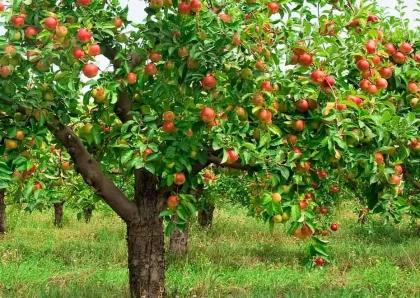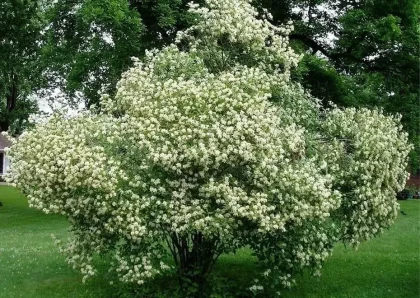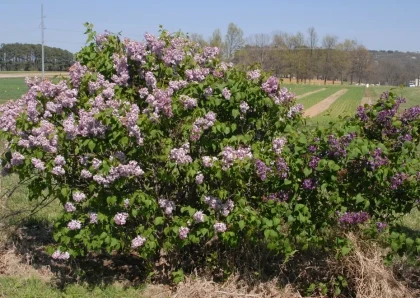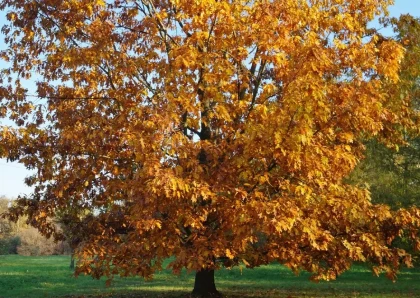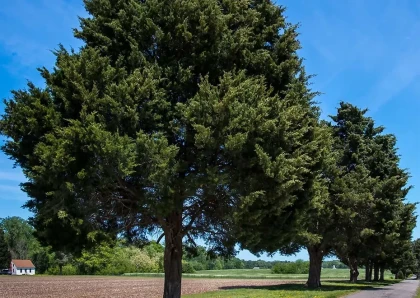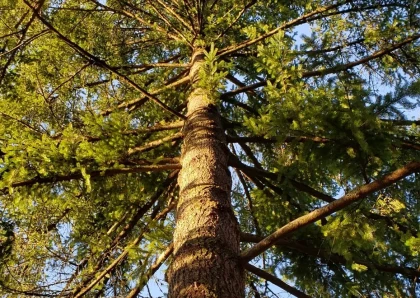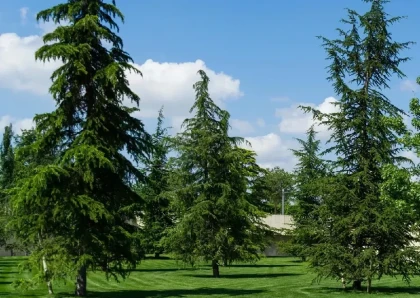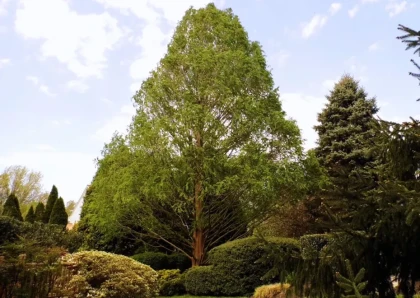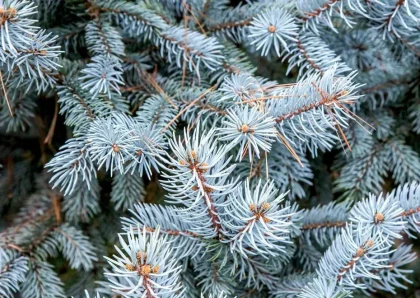
Yoshino Cherry Tree
Overview
Yoshino Cherry Tree
The Yoshino cherry tree, scientifically known as Prunus × yedoensis, is a popular ornamental cherry tree cultivar that originated in Japan. It is a hybrid between two other cherry tree species, Prunus speciosa (Oshima cherry) and Prunus pendula (Weeping cherry).
The tree is renowned for its stunning and abundant white-pink blossoms, making it one of the most beloved cherry tree varieties for ornamental purposes.
Appearance
The Yoshino cherry tree is a deciduous tree that typically grows to a height of 25 to 40 feet (7.6 to 12.2 meters). It has a broad, spreading canopy with graceful, arching branches. The bark is brownish-gray, and the leaves are serrated and ovate, turning a bronze color in the fall before shedding.
Flowers
In early spring, usually around March or April, before the leaves appear, the Yoshino cherry tree bursts into a breathtaking display of fragrant, five-petaled flowers. The flowers are pale pink to white, creating a beautiful contrast against the dark branches. The blossoms are short-lived, lasting about a week to ten days, but during this time, they create a captivating sight, attracting numerous admirers.
Cultivation
Yoshino cherry trees thrive in temperate climates, and they prefer full sun exposure to produce the best flower displays. They can adapt to a variety of soil types, but well-drained, slightly acidic soil is ideal for their growth. Proper care, including regular watering and pruning to maintain shape and health, can help these trees flourish.
Symbolism
In Japan, the cherry blossoms, including those of the Yoshino cherry tree, hold significant cultural and historical importance. They are celebrated for their ephemeral beauty and are often associated with the transience of life, symbolizing renewal and hope. The tradition of cherry blossom viewing, known as "hanami," is a centuries-old custom in Japan, where people gather to appreciate and celebrate the blooming of cherry trees.
Usage
Due to its aesthetic appeal and symbolic significance, the Yoshino cherry tree is a favorite choice for landscaping parks, gardens, streets, and other public spaces. It is widely planted not only in Japan but also in various parts of the world where the climate is suitable for its growth.
Types of Yoshino Cherry Tree
Prunus × yedoensis 'Yoshino'
The Prunus × yedoensis 'Yoshino' is the most popular and widely planted variety of Yoshino cherry tree for ornamental purposes. It originated in Japan and is known for its stunning and abundant white-pink blossoms.
Wood Products from Yoshino Cherry Tree
Cherry Wood in General
Cherry wood, including that from the Yoshino cherry tree, is highly valued for its fine grain, attractive color, and workability. While Yoshino cherry is primarily used for ornamental purposes, cherry wood in general is commonly used in various woodworking projects.
Possible Wood Products
The potential wood products that could be made from Yoshino cherry wood may include:
- Furniture (e.g., cabinets, tables, chairs)
- Millwork (e.g., moldings, trim)
- Interior paneling
- Decorative wooden items
- Wooden crafts
Benefits of Yoshino Cherry Tree
1. Ornamental Beauty
The Yoshino cherry tree is prized for its stunning and abundant white-pink blossoms, making it a popular choice for ornamental purposes. It adds beauty and elegance to landscapes, gardens, parks, and streets.
2. Symbolic Significance
In Japanese culture, cherry blossoms, including those of the Yoshino cherry tree, symbolize the transience of life, renewal, and hope. The tradition of cherry blossom viewing (hanami) celebrates their ephemeral beauty and has cultural importance.
3. Attracts Wildlife
The blossoms of the Yoshino cherry tree attract pollinators, such as bees and butterflies, which aids in pollination. Additionally, the tree's fruit can serve as a food source for various bird species.
4. Environmental Benefits
Cherry trees, including Yoshino cherry, contribute to air quality by absorbing carbon dioxide and releasing oxygen. They also provide shade, reducing the urban heat island effect in cities and offering a cooling effect in hot weather.
5. Low Maintenance
The Yoshino cherry tree is relatively low-maintenance, making it a practical choice for landscaped areas. With proper care, it can thrive in various climates and soil types.
6. Versatile Uses
Though primarily grown for ornamental purposes, cherry wood from the Yoshino cherry tree or related species can be used for various woodworking projects. Cherry wood is highly regarded for its fine grain and attractive color.
Cons of Using Yoshino Cherry Tree
1. Short Blooming Period
The Yoshino cherry tree's most remarkable feature, its stunning blossoms, have a relatively short lifespan, usually lasting about a week to ten days. After this period, the flowers fall off, and the tree becomes less visually striking until the following spring.
2. Messy Debris
As with many flowering trees, the Yoshino cherry tree can create a mess due to the falling blossoms, leaves, and small fruits. This can be a concern for homeowners and those responsible for maintaining public spaces.
3. Not Suitable for All Climates
Yoshino cherry trees prefer temperate climates and may not thrive or flower as well in regions with extreme heat, cold, or dry conditions. In unsuitable climates, they might be more susceptible to diseases and pests.
4. Limited Fruit Production
While the tree does produce small cherry fruits, they are generally not used for culinary purposes, as the fruit quality and quantity are limited compared to other cherry tree varieties.
5. Vulnerable to Pests and Diseases
Like many cherry trees, Yoshino cherry can be susceptible to pests and diseases, such as aphids, caterpillars, and various fungal infections. Regular monitoring and appropriate care are essential to maintaining the tree's health.
6. Not Suitable for Wood Production
Although cherry wood is highly valued in woodworking, the Yoshino cherry tree is primarily grown for ornamental purposes and is not typically used for large-scale wood production due to its relatively smaller size and other cherry species being more suitable.
Tips for Planting and Maintaining Yoshino Cherry Tree
1. Choosing the Planting Location
Plant the Yoshino cherry tree in a location with full sun exposure to ensure the best flower display. Ensure that the area has well-draining soil to prevent waterlogging, which can be detrimental to the tree's health.
2. Planting the Tree
Plant the tree in the early spring or fall, avoiding extreme temperatures. Dig a hole that is twice as wide as the root ball and just as deep. Place the tree in the hole, backfill with soil, and water thoroughly to help the roots establish.
3. Watering
Keep the newly planted Yoshino cherry tree well-watered during its first year to promote healthy root growth. After the first year, water the tree during dry spells, but be cautious not to overwater, as cherry trees prefer moderate moisture.
4. Mulching
Apply a layer of organic mulch around the base of the tree, leaving a gap around the trunk. Mulching helps retain soil moisture, suppress weeds, and improve soil health. Replenish the mulch periodically as it decomposes.
5. Pruning
Prune the Yoshino cherry tree during the dormant season (late winter or early spring) to remove dead or diseased wood, improve air circulation, and shape the tree. Avoid heavy pruning in summer, as it may remove flower buds for the following spring.
6. Fertilizing
Fertilize the tree in the early spring with a balanced fertilizer to provide essential nutrients. Follow the manufacturer's recommendations and avoid excessive fertilization, which can lead to imbalanced growth.
7. Pest and Disease Control
Monitor the tree regularly for signs of pests and diseases. Aphids, caterpillars, and fungal infections are common issues. If detected, consider using environmentally friendly pest control methods or consult with an arborist for appropriate treatments.
8. Protecting from Harsh Weather
During extreme weather conditions like heavy snow or strong winds, provide temporary protection for young or vulnerable trees using stakes or covers to prevent damage.
Conclusion
Yoshino cherry tree (Prunus × yedoensis)
The Yoshino cherry tree, scientifically known as Prunus × yedoensis, is a beloved ornamental cherry tree cultivar that originated in Japan. It is a hybrid between Prunus speciosa (Oshima cherry) and Prunus pendula (Weeping cherry).
Key Features
One of its most remarkable features is its stunning and abundant white-pink blossoms, which make it a popular choice for landscaping parks, gardens, streets, and other public spaces.
Cultural Significance
In Japan, cherry blossoms, including those of the Yoshino cherry tree, hold significant cultural and historical importance. They symbolize the transience of life, renewal, and hope, and the tradition of cherry blossom viewing (hanami) is a cherished custom.
Maintenance and Care
To plant and maintain a Yoshino cherry tree successfully, consider factors like choosing an appropriate planting location with full sun exposure and well-draining soil. Proper watering, mulching, pruning, and fertilizing are essential for the tree's health and longevity.
Potential Uses
While primarily grown for its ornamental beauty, cherry wood from the Yoshino cherry tree or related species can be used in various woodworking projects due to its fine grain and attractive color.
Conclusion
The Yoshino cherry tree captivates with its brief yet dazzling floral display and its cultural significance. By following proper care and maintenance, this cherished tree can continue to bring joy and beauty to landscapes for generations to come.
No listings available
Related Products
Golden Jubilee Peach Tree
Prunus persica 'Golden Jubilee' is a specific cultivar of peach tree. It is a deciduous fruit tree belonging to the Rosaceae family. 'Golden Jubilee'...
Gray Dogwood
Cornus racemosa, commonly known as the gray dogwood or northern swamp dogwood, is a deciduous shrub native to eastern North America. It belongs to...
Common Fragrant Lilac
Syringa vulgaris, commonly known as the Common Lilac or French Lilac, is a deciduous shrub belonging to the genus Syringa in the olive family...
European Beech Tree
The European Beech (Fagus sylvatica) is a deciduous tree species native to much of Europe, including parts of western Asia. It is one of...
Emerald Arborvitae Tree
The Emerald Arborvitae (Thuja occidentalis 'Smaragd') is a popular evergreen tree or shrub in landscaping and gardening. It belongs to the cypress family (Cupressaceae)...
Eastern Red Cedar Tree
The Eastern Red Cedar, scientifically known as Juniperus virginiana, is a species of evergreen tree native to eastern North America. It belongs to the...
Douglas Fir Tree
The Douglas Fir (Pseudotsuga menziesii) is an evergreen coniferous tree that belongs to the Pinaceae family. It is one of the most common and...
Deodar Cedar Tree
The name "Deodar" is derived from the Sanskrit words "deva" (meaning "god") and "daru" (meaning "wood" or "tree"), hence it is often referred to...
Dawn Redwood Tree
The Dawn Redwood tree, scientifically known as Metasequoia glyptostroboides, is a deciduous coniferous tree that belongs to the family Cupressaceae. It is a unique...
Colorado Blue Spruce Tree
The Colorado Blue Spruce, scientifically known as Picea pungens, is a species of coniferous tree belonging to the Pinaceae family. It is native to...






